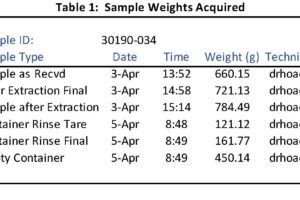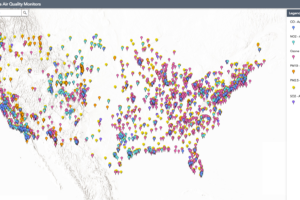When you get any laboratory report, do you wonder what the lab does to ensure that your data is defensible and accurate? Does your head swim when your laboratory spouts terms like CCV and other acronyms? Let’s break down the major quality checks most labs use every day to make sure your data is both accurate and reliable.
Performance Testing Samples
A Performance Testing or “PT” sample is a blind audit sample. An example laboratory report for these samples should be available for review in all laboratories. The lab will go to a third-party provider to get a PT sample. The lab analyzes the sample via specific methods and reports the results back. This sample should be analyzed like any normal sample. The third-party provider will then tell the lab how close they were to the actual value.
The PT sample analysis is a snapshot of the laboratory’s operating processes from beginning to end and can tell a lot about the laboratory, for example:
- the accuracy of their analytical processes in use during that period;
- when observed over time, the precision and bias in the process.
Project vs Periodic Calibration
Some labs will choose one of two frequencies of instrument calibration. Periodic calibration is where a lab will perform a full instrument calibration once over a specified period. Then, over that period, the lab will run intermittent spot checks to ensure the calibration is valid before any analysis. Multiple batches of analyses covering multiple projects may be analyzed during the period.
A project calibration is where the lab calibrates an instrument before each batch of analyses for a given project. This is usually accompanied by a post-calibration after all the analyses are completed. This method minimizes the effect of instrument drift on the sample analysis.
Calibration Checks
During any analysis, there will be calibration checks done at regular intervals. There are two types of calibration checks often used in conjunction with each other.
Secondary Standard check
- Created from standards different than those that create the full calibration curve of the instrument. It is common to use standards from a different lot number than that of the calibration standards.
- This standard is a primary check on calibration validity and is representative of the accuracy of the calibration.
- Shows the ability of the laboratory to do the analysis with no matrix interference that may be present in the sample.
- Over larger projects, multiple secondary standard checks are indicative of the instrument bias throughout the analysis.
Primary Standard check
- Primary standards are created from the same standards used to create the full instrument calibration.
- As above, these checks are used as a calibration validity check.
- They also show the level of consistency in the process for the creation of the calibration standards.
- Over larger projects, multiple primary standard checks are indicative of the instrument bias throughout the analysis.
Duplicate Analysis
During the analyses of a batch of samples, different types of duplicate analyses may be run. This checks the ongoing instrument performance as well as the reproducibility of the preparation technique of the samples.
Duplicate Analysis (same preparation)
- This analysis involves duplicate measurements of the same sample following identical procedures.
- This checks the measurement consistency of the instrument during the analysis.
- For any given duplicate sample, the laboratory looks for measurement consistency based on a set of acceptance criteria such as maximum limits for absolute difference or relative deviation between the two measurements.
Duplicate Analysis (different preparation)
- This analysis involves repeating a measurement of a sample following a separate preparation procedure than that used for the original measurement.
- This provides a check on instrument performance and preparation consistency during the analysis period.
- It can show the repeatability of the analysis and reveal instrument drift.
Sample Matrix Spikes
A matrix spike involves the addition of a known quantity of the analyte(s) of interest into a separate aliquot of the sample. It is analyzed along with the original unspiked aliquot to determine any effects of matrix interferences. The acceptance criteria will vary based on matrix and analyte.
The preparation and analysis of matrix spikes should be done for each type of matrix being analyzed. By knowing the amount of analyte added to the sample, the laboratory can calculate a recovery percentage of the spiked amount. The analysis of matrix spikes will check two things for the laboratory:
- If the analysis that was chosen is correct for the matrix.
- If the analysis matrix bias is significant for the analyte.
The secondary standard check should be used in conjunction with the matrix spike results to separate issues of laboratory performance and “matrix effects.”
An example of matrix bias can be seen in certain organics analysis. Naphthalene does not work well with charcoal sorbent tubes. While activated charcoal adsorbs naphthalene efficiently, it is not desorbed well using most solvents. A recovery of 70% or less of a known spike from activated carbon is common. Therefore, a different sorbent matrix should be selected. For this example, XAD is often used instead of charcoal.
Laboratory Method Blanks
A method blank should be prepared and analyzed by the laboratory for any batch of samples being analyzed. Separate blanks should be created for each different matrix and assessed for each applicable analyte. The results will show any potential contamination during the preparation steps of the analysis. Depending on the method or type of analysis, the results from these blanks may also factor into the calculation of the minimum detection limit.
What can you do?
Laboratories may have different names for each, but these main points should be present for each analysis. Before you submit your samples to the lab, confirm that each of these points is covered and tracked. They are an essential part of your analysis and should be clearly shown in the final analytical report.
CleanAir provides all this data to you, standard. Please contact us today to discuss how we can help with your next project.







